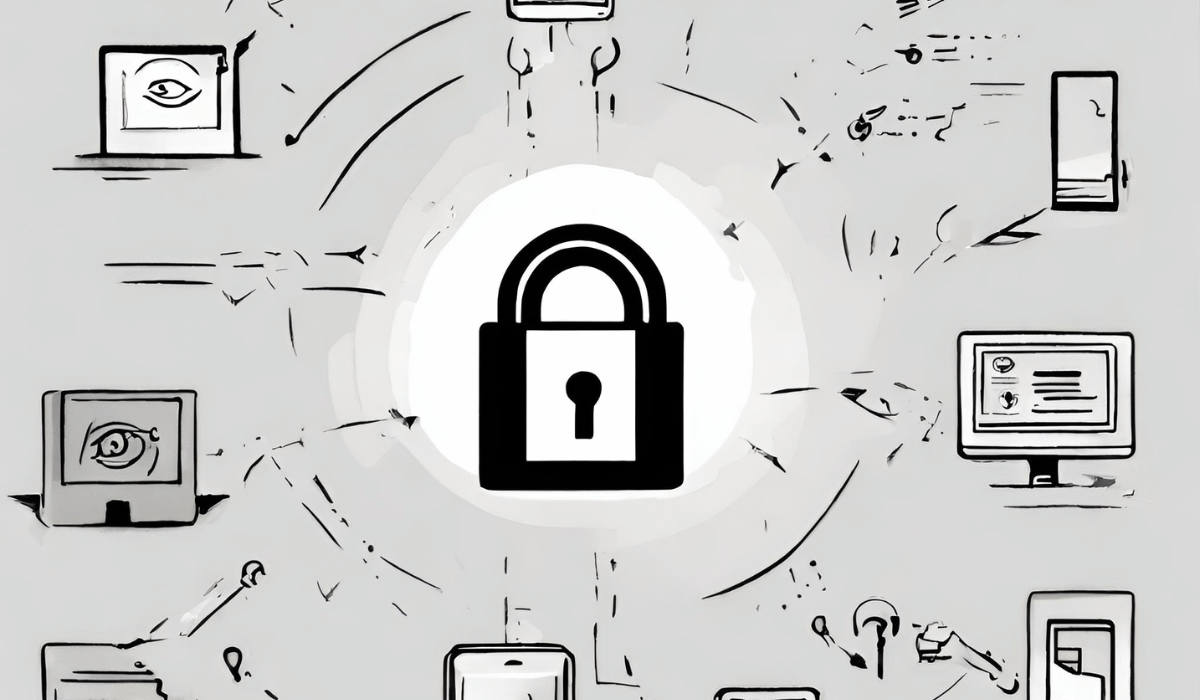Encryption is the process of converting data into an unreadable format, known as ciphertext, using an algorithm and a cryptographic key.
Encryption: The Process of Safeguarding Data
Introduction to Encryption
Encryption is the process of converting data into an unreadable format, known as ciphertext, using an algorithm and a cryptographic key.
Data security has become a paramount concern for individuals, businesses, and organizations in today’s digital world. With the increasing reliance on the internet and the rapid growth of technology, protecting sensitive information from unauthorized access is essential. Encryption is a powerful and fundamental tool to ensure data confidentiality and integrity. We will delve into the depths of encryption, exploring its definition, methods, applications, and significance in safeguarding data from prying eyes.
What is Encryption?
Encryption is the process of converting data into an unreadable format, known as ciphertext, using an algorithm and a cryptographic key. This transformation makes it incredibly challenging for unauthorized individuals to decipher the original information without the appropriate decryption key. Encryption is a protective shield, ensuring that even if data is intercepted or accessed illicitly, it remains unintelligible and unusable.
The Importance of Encryption
Data breaches, cyberattacks, and identity theft have become more prevalent in the digital landscape. To combat these threats effectively, encryption has emerged as a critical line of defense for users and organizations. The importance of encryption can be understood through the following aspects:
-
Data Privacy and Confidentiality
Privacy is a fundamental right; encryption upholds this right by keeping sensitive data secure. Whether it’s personal information, financial data, or classified business records, encryption ensures that only authorized parties can access and comprehend the information.
-
Preventing Data Manipulation
Encryption protects data from unauthorized access and safeguards against data tampering. Any attempt to alter encrypted data without the proper decryption key will render the information useless, thus maintaining its integrity.
-
Secure Communication
In the digital age, data is constantly transmitted across networks. Encryption ensures secure communication, preventing eavesdroppers from intercepting and understanding the transmitted data, such as emails, instant messages, and financial transactions.
-
Compliance with Regulations
Many industries and jurisdictions have established strict regulations regarding data protection. Encryption is often a requirement to comply with these regulations and avoid severe penalties for data breaches.
How Encryption Works?
The process of encryption involves two main components: an algorithm and a key.
-
Encryption Algorithms
Encryption algorithms are complex mathematical functions that manipulate data to convert it into ciphertext. There are two primary types of encryption algorithms: symmetric and asymmetric.
Symmetric Encryption
In symmetric encryption, a single secret key is used for both encryption and decryption. The same key that encrypts the data is used to decrypt it, making it faster but requiring a secure key exchange method.
Asymmetric Encryption
On the other hand, asymmetric encryption involves a pair of keys: a public key and a private key. The public key is encrypted, while the private key is kept secret and used for decryption. Asymmetric encryption provides better security but is slower due to the complexity of the algorithms.
-
Encryption Keys
Encryption keys are the foundation of encryption systems. They are strings of bits or characters that determine the outcome of the encryption process. The strength of encryption relies on the length and complexity of the key. Longer keys with high entropy provide greater security and are harder to crack.
Popular Encryption Techniques

Several encryption techniques are widely used across various applications to secure data:
-
Advanced Encryption Standard (AES)
AES is one of the most commonly used symmetric encryption algorithms. It is widely adopted and considered highly secure, making it the standard for protecting sensitive data in various industries, including finance, healthcare, and government.
-
RSA Encryption
RSA is a widely used asymmetric encryption algorithm. Its security is based on the difficulty of factoring large prime numbers, making it practically impossible for attackers to derive the private key from the public key.
-
Transport Layer Security (TLS)
TLS protocol provides secure communication over a network, commonly used to secure web traffic. It uses symmetric and asymmetric encryption techniques to ensure data confidentiality and integrity during transmission.
-
Pretty Good Privacy (PGP)
PGP is a widely used encryption program for securing email communications. It utilizes symmetric and asymmetric encryption to protect the content and attachments of emails.
Applications of Encryption
Encryption has found its applications in various domains due to its robust security capabilities. Some prominent applications include:
-
Data Storage and Cloud Security

Encryption is extensively used to secure data stored on devices such as laptops, smartphones, and external drives. Cloud service providers also employ encryption to safeguard customer data from unauthorized access.
-
Secure Messaging and Communication
Instant messaging apps and email services often incorporate encryption to protect the privacy and confidentiality of messages sent between users.
-
E-commerce and Online Transactions
Encryption is vital for online shopping and banking, ensuring the safety of financial transactions and protecting personal information.
-
Virtual Private Networks (VPNs)
VPNs utilize encryption to create secure tunnels between devices and servers, enabling users to browse the internet privately and securely.
Key Takeaways
- Encryption Safeguards Data: Encryption is the process of converting data into an unreadable format using algorithms and keys, providing a robust defense against unauthorized access.
- Data Privacy and Integrity: Encryption ensures data privacy by securing sensitive information and preventing data breaches and identity theft. It also maintains data integrity by preventing unauthorized tampering.
- Symmetric and Asymmetric Encryption: Symmetric encryption uses a single secret key for encryption and decryption. In contrast, asymmetric encryption involves a pair of keys – a public key for encryption and a private key for decryption.
- Popular Encryption Techniques: AES, RSA, TLS, and PGP are widely used encryption techniques, each serving specific purposes in securing data across various applications.
- Applications of Encryption: Encryption finds applications in data storage, secure messaging, e-commerce, online transactions, and virtual private networks (VPNs), ensuring secure communication and protecting sensitive data.
- Compliance and Regulation: Many industries and jurisdictions require encryption to comply with data protection regulations and avoid penalties for data breaches.
- Embracing Digital Safety: Understanding encryption and adopting best practices is essential to safeguarding data in the digital age and fostering a secure online environment.
FAQs
Is encryption 100% foolproof?

While encryption is highly effective in safeguarding data, no security measure is entirely foolproof. The strength of encryption largely depends on the complexity of algorithms and encryption keys. It is essential to regularly update encryption methods to stay ahead of evolving cyber threats.
How do I know if a website uses encryption?
Look for “https://” in the website’s URL. Websites with “https://” use SSL/TLS encryption, ensuring secure communication between your browser and the site’s server. Additionally, modern web browsers often display a padlock icon to indicate a secure connection.
Can encryption be used for communication across different devices?
Encryption can be used for secure communication between devices and platforms. Many messaging apps, email services, and cloud storage providers incorporate encryption to maintain data security across various devices and networks.
Is encryption legal worldwide?
Encryption is generally legal in most countries. However, some jurisdictions may have specific regulations regarding the use of encryption, especially in sensitive industries like finance and government. Knowing local laws and compliance requirements is essential when implementing encryption solutions.
How often should I update my encryption methods?
Regularly updating encryption methods is essential to avoid potential security vulnerabilities and emerging threats. Older encryption algorithms may become susceptible to attacks as technology evolves, making adopting the latest and most secure encryption practices crucial.
Can encryption be used to protect files on external storage devices?
Encryption can be applied to files stored on external devices such as USBs and hard drives. Many operating systems offer built-in encryption features, or users can use third-party encryption software to secure their data on external storage.
Conclusion
Encryption is an essential shield in safeguarding sensitive data in the digital realm. Its robust algorithms and secure keys defend against unauthorized access and maintain data confidentiality, integrity, and privacy. Embracing encryption practices ensures a safer and more secure online environment.
